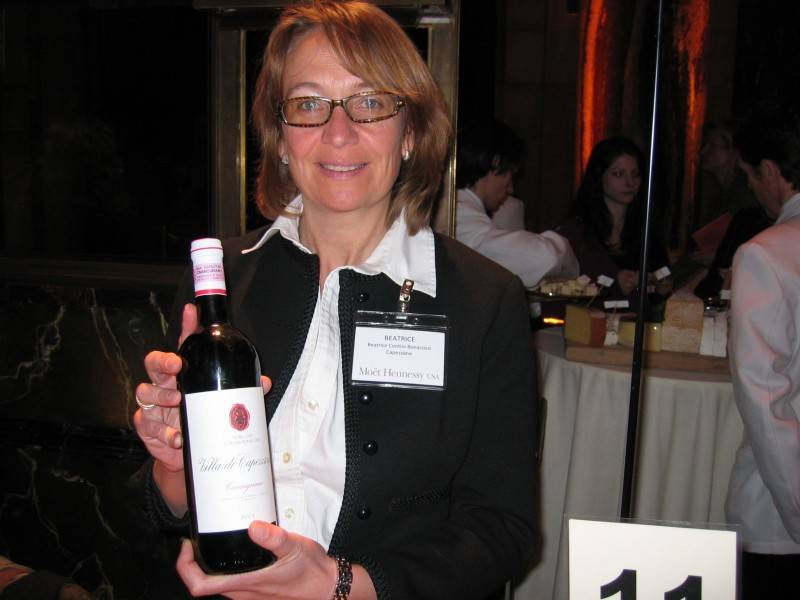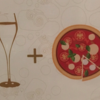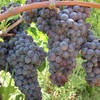A Memorable Dinner with a Wine 60 Years Old
Certain wines and the people that make them bring back happy memories. At the annual Moet Hennessy portfolio tasting in January I was pleased to see four of my favorite producers: Castello Monsanto(Tuscany); Tenuta di Capezzana (Tuscany); Ceretto(Piedmont); and Livio Felluga (Friuli-Venezia-Giulia). I began tasting the Capezzana wines and chatted with Beatrice, the daughter of the owner, Count Ugo Bonacossi. As I tasted the Villa di Cappezzano Carmignano we begin talking about a special wine night over 20 years ago.
In 1985, the late Sheldon Wasserman, a friend and the author of The Great Red Wines of Italy, called and said that Count Ugo was in town and he would like to bring him to my house for dinner. This was an extraordinary event: not only because the Count and his wife were there, but also because my wife Michele was on a business trip, and I had to prepare the meal with a little help from my friends. Count Ugo, in my opinion, makes the best wine from the Carmignano region of Tuscany. For those of you who don't know Carmignano, it is a blend of Sangiovese and Cabernet Sauvignon (Cabernet Franc is also permitted) grown in the province of Prato, just northwest of Firenze.
That night we drank a number of wines from his estate. The last wine, however, was a wine that, at the time it was produced, was not called Carmignano but rather it was called Chianti (the Carmignano appellation lies within the Chianti Montalbano appellation and although it has been recognized unofficially for centuries, it was not until 1975 that it acquired DOC status, DOCG in 1991). The Count poured this wine himself and then proudly announced that this was the first wine that he remembered his father making.
The vintage was 1925, so the wine was 60 years old. As we all tasted it, we looked at each other in amazement: the wine seemed as if it were only 10 or 15 years old, proving again that sangiovese can age (there was less cabernet in the wine then there is now). I have been drinking the Carmignano from Bonacossi since the early 1980’s on Sheldon Wasserman’s recommendation. It was one of his favorite wines and became one of mine too because it never disappoints and goes so well with food. A few years ago, after a trip to Vinitaly, I stopped at the winery and they opened some vintages for us from the 1930’s. In all truthfulness, some of them were showing their age and some of them were still in great condition. In 1997, the estate revamped its approach to winemaking and the winemaker began adding more Cabernet Sauvignon and using new French oak (barrique). They still make a great Carmignano, however in a more modern style.
Last year Michael Riahi and Seth Box who represent Capezzano brought some wines for me to taste. Among them was the 1996 Riserva. This was the last year that they labeled the wine "Riserva" and the last wine made in the old style. I immediately ordered two cases for myself. By coincidence, one of the women who helped me cook the dinner for the count happened to be there with her husband and we talked about that dinner long ago. I invited them for dinner the next week -- Michele cooked, of course -- and we opened a 1985 Carmignano Riserva to commemorate our evening with the count more than 20 years ago. The wine was drinking perfectly. I am now drinking the 1996 but the wine could last for another 5 to 10 years.
The Capezzana wines that I tasted at the portfolio tasting were: Barco Reale di Carmignano 2005 D. O. C. 70% sangiovese and 20% Cabernet Sauvignon ($14); the Bordeaux blend Ghiaie della Furba 2001 I.G.T made with 60% Cabernet Sauvignon, 20% Merlot and 20% Syrah($46); Carmignano Trefiano and 2001 D. O. C. G. made with 70% Sangiovese, 20% Cabernet Sauvignon, and 10 % Canaiolo($37); Villa di Capezzano Carmignano 2004 D.O.C.G. made with 80% Sangiovese and 20% Cabernet Sauvignon.($30). All were showing very well but my favorite was the Villa di Capezzano. Missing from the tasting was the vin santo, Vin Santo di Carmignano D.O C. Vin santo is the typical Tuscan desert wine but this one is anything but typical. Do not dunk your cantucci (Tuscan biscotti) in this one. It is very complex with hints of dried fruit, apricot, and orange peels. It has a long finish and an aftertaste of candied fruits.
After the vinaccia (skins and pomace) are pressed to make the vin santo, it is distilled to make grappa. This grappa is one of the most interesting I have ever tasted. I was lucky enough to get a bottle of grappa when I saw Beatrice in Verona, at VinItaly last year. It is not available in the U. S.





































i-Italy
Facebook
Google+
This work may not be reproduced, in whole or in part, without prior written permission.
Questo lavoro non può essere riprodotto, in tutto o in parte, senza permesso scritto.